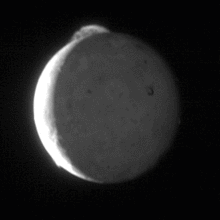
Theoretical planetology, also known as theoretical planetary science[3] is a branch of planetary sciences that developed in the 20th century.[4] Scientific models supported by laboratory experiments are used to understand the formation, evolution, and internal structure of planets.
- ^ Cite error: The named reference
Hans-2003was invoked but never defined (see the help page). - ^ Cite error: The named reference
predictionwas invoked but never defined (see the help page). - ^ [1] Archived December 11, 2006, at the Wayback Machine
- ^ Celebonovic, V. (2000). "Semiclassical planetology : Some results". Publications de l'Observatoire Astronomique de Beograd. 67: 19. arXiv:astro-ph/0005117. Bibcode:2000POBeo..67...19C.